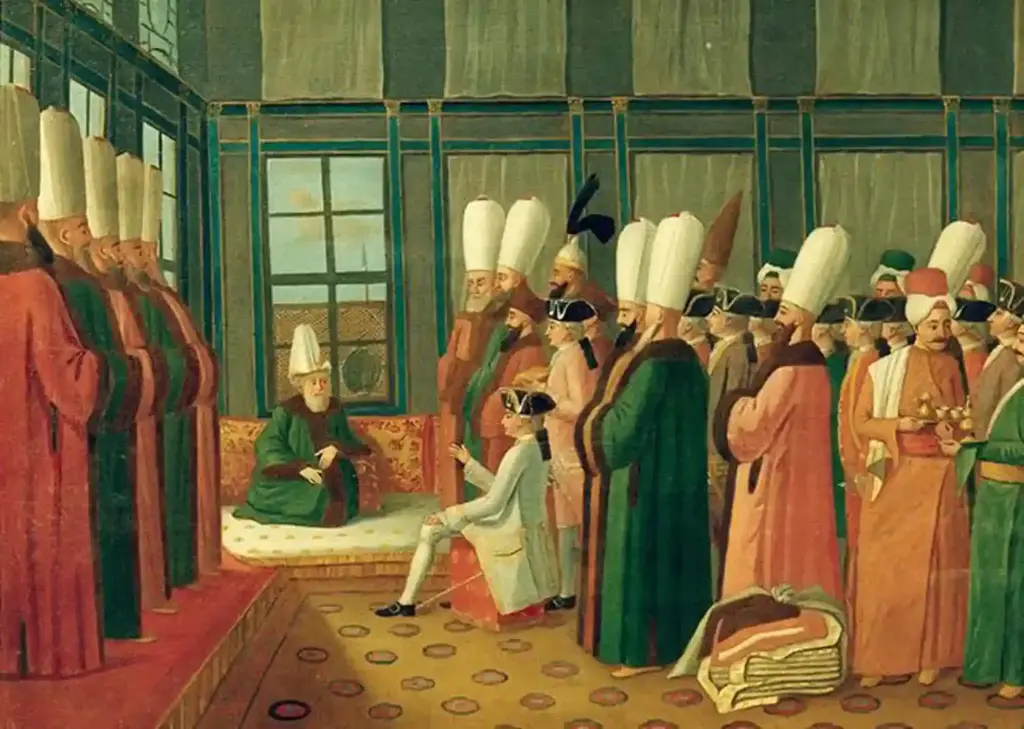Succession System Of Ottoman Empire; The Ottoman Empire has made its mark in history as a great state that ruled over vast lands for over 600 years. One of the systems it developed to ensure the administration and continuity of this huge empire is the succession system. The “
Succession System Of Ottoman Empire ” is an important mechanism that deeply affected the internal dynamics and administrative structure of the empire and underwent changes over time. In this article, how the “Ottoman Succession System” worked, its historical development and its effects on the empire will be discussed in detail. The historical process of the “Succession System Of Ottoman Empire” also provides important clues in terms of the internal policies and balance of power of the Ottoman dynasty. How the “Succession System Of Ottoman Empire” worked, what stages it went through and what its results were will constitute the main subject of this article.
Fundamentals of the Ottoman Succession System
During the foundation of the Ottoman Empire, the inheritance system was based on the most powerful son of the ruler ascending to the throne, without any specific rules. During this period, there would usually be a power struggle between the surviving sons of the ruler, and the winner would be the new ruler. This situation caused constant conflict within the dynasty, and even fratricide.
- The Foundation Period and Primitive Succession
In the early years of the Ottoman Empire, during the reigns of Osman Gazi and Orhan Gazi, the system of succession was quite primitive. At first, there was no such arrangement as the eldest surviving son of the ruler ascending to the throne. Instead, the strongest and most talented son usually ascended to the throne. This situation created a great atmosphere of competition and conflict within the Ottoman dynasty.
- Fatih Sultan Mehmet and the Reform of the Succession System
Fatih Sultan Mehmet (Mehmet II) made a significant change in the inheritance system in the Ottoman Empire by introducing the law of fratricide (Kanunname-i Âl-i Osman). This law legitimized the killing of other brothers by the ruler who ascended to the throne. The aim of this law was to prevent fights for the throne and to ensure the internal peace of the empire. However, this law led to bloody incidents and internal strife many times.
3. Cage System
In the 4th century, another important change in the Ottoman Empire’s succession system, the “Cage System”, was introduced. In this system, the princes were kept in a special section (cage) inside the palace until they ascended to the throne. This practice caused the princes to remain isolated from state affairs and to receive inadequate education. Although the Cage System resulted in less bloodshed within the Ottoman dynasty, it led to the accession of sultans who were inexperienced in state administration.
Examples of the Succession System in Practice
The accession of different sultans to the throne and the events that took place during these processes throughout the historical process of the Ottoman inheritance system provide important information about how the system worked.
- Yavuz Sultan Selim and His Accession to the Throne
The accession of Yavuz Sultan Selim (Selim I) to the throne is a typical example of the Ottoman succession system. Yavuz Sultan Selim rebelled against his father Bayezid II and became the ruler by dethroning him. During this process, he was successful in the struggle for the throne with his brothers and became the sultan.
- Suleiman the Magnificent and the Period of Stability
Suleiman the Magnificent’s (I. Suleiman) ascension to the throne was relatively smooth. He ascended to the throne upon the death of his father, Yavuz Sultan Selim, and during his long reign, he led the Ottoman Empire through one of its most glorious periods. During the reign of Suleiman the Magnificent, the system of succession operated relatively more stably.
- Mehmet III and the Fratricide
The accession of Mehmet III to the throne is another example that reveals the bloody face of the Ottoman succession system. When Mehmet III ascended to the throne, he had 19 of his brothers and many of his nephews killed. This incident shows how cruel and bloody the Ottoman succession system could be.

Changes in the Succession System and Its Results
Towards the end of the Ottoman Empire, the succession system became more peaceful and orderly. In the 19th century, the succession system was organized according to the principle of “Akbar and Erşed”. According to this principle, the oldest and most mature member of the dynasty would ascend to the throne. This arrangement greatly reduced the fights for the throne and created a more stable government structure.
- The Akbar and Ershad System
- In the 16th century, the Ottoman succession system became more modern and peaceful with the Akbar and Ershad system. In this system, the oldest and most experienced member of the dynasty would become the sultan. This practice contributed to the formation of a more orderly administrative structure in the late Ottoman Empire.
- The Period of Abdulmecid and Abdulaziz
During the reigns of Abdulmecid and Abdulaziz, the Ekber and Ershad system was implemented and throne fights were largely prevented. During this period, the transition of the sultans to the throne was more peaceful.
Evaluation of the Succession System Of Ottoman Empire
The Ottoman succession system has undergone many changes throughout the empire’s long history and has been implemented in different ways at different times. This system has deeply affected the internal dynamics and administrative structure of the Ottoman Empire. The bloody and conflicting periods of the Ottoman succession system legitimized dynastic conflicts and fratricide. However, with the system of Akbar and Ershad, it has become more peaceful and orderly.
The “Succession System Of Ottoman Empire” is an important mechanism that deeply affected the internal dynamics and administrative structure of the Ottoman Empire. This article examines the historical process of the “Ottoman Succession System”, its applications in different periods, and its results in detail. The “Ottoman Succession System” has gone through many phases from the foundation period to the Ekber and Erşed system. Each phase left deep traces on the Ottoman dynasty and the administration of the empire. Understanding the “Succession System Of Ottoman Empire” will help us better understand Ottoman history and the internal dynamics of the empire. The “Succession System Of Ottoman Empire” is an important part of Ottoman history as a system that has been constantly evolving and changing throughout the long history of the empire.
